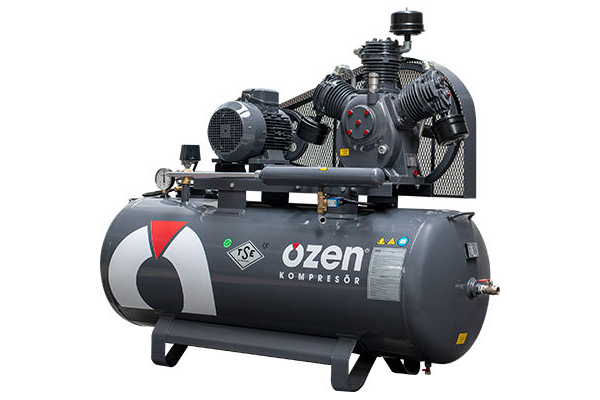Piston Air Compressors

Models

Piston Air Compressors
A piston air compressor is a positive displacement compressor that uses a crankshaft driven piston and cylinder to compress air.
As the piston moves back and forth to the dead part at the bottom, the atmosphere gas is sucked and cleaned in the dry air filter and passes through the intake valves. As the piston moves to the dead point at the top, it is compressed by the discharge valves. Compressed air is obtained by the action of the piston. The piston compressor head block is triggered by the electric motor belt-pulley system. A single-stage compressor is used for low pressures, and a two-stage compressor is used for higher pressures. A two-stage compressor involves recompressing the compressed air in the first head block by transferring it to the second head.
The excess of parts that work against wear such as pistons, valves and rings can be shown as a disadvantage. In order to provide high pressure in piston compressors, several head blocks must be connected to each other like a chain.
How Does a Piston Compressor Work?
In a conventional piston compressor, such as a small internal combustion engine, it has a crankshaft, a connecting rod and piston, a cylinder and a valve head. As the piston moves down, a vacuum form on it. This allows outside air at atmospheric pressure to push open the intake valve and fill the space above the piston. With the drive from the engine, the piston goes up again and compresses the air inside. The pressure of the compressed air increases and pushes the delivery valves. It comes out with the effect of pressure. This harmonic motion ensures the production of compressed air by repeating it continuously.
Why Should You Prefer Piston Compressor?
Piston compressors are ideal for workshops and small factories where the air demand is not very high or is not needed continuously. Piston compressors stand out with their affordability, durability, efficiency and low maintenance cost when used under appropriate conditions. Call for our piston compressor options.

